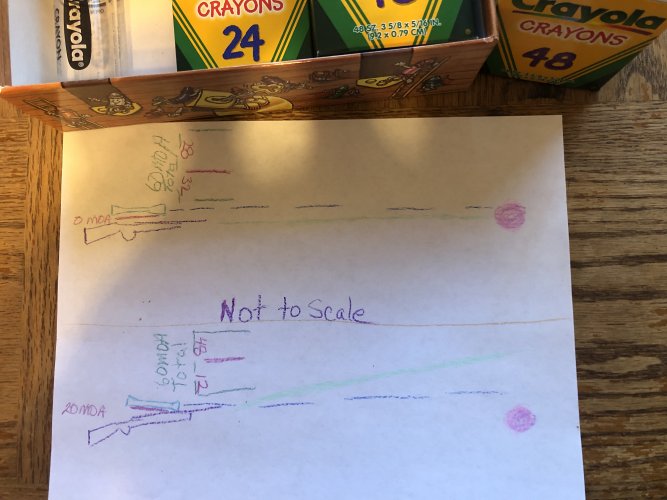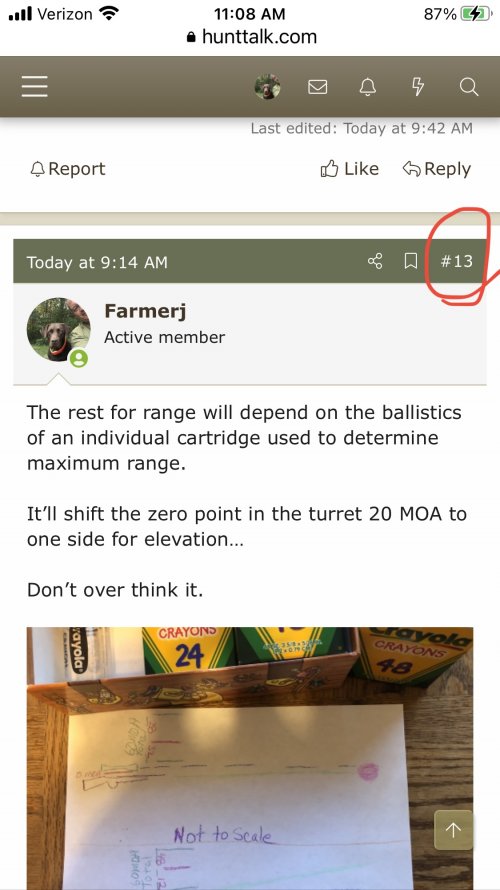I have a 300 WSM (browning x bolt) Just bought a SIG 6x24-50 scope. Ordered a 20MOA rail for it, I know it wont hurt, but thinking do I really need it. Also going to get the SIG custom turret. Scope will be zeroed at 100 yds, 1/4MOA at 100 yds on the scope
Anyways here is my math, scope claims 100 clicks at 25 MOA, funny thing is scope turned all the way down I am counting like 120 some odd clicks, so is the 100 clicks assuming a 100yd zero?
The round I use at 1000 yds would drop 265in, or 26.5 MOA or 106 clicks. which would put scope at stock set up max Range at about the 960-980 range.
I guess Where I don't have a grasp is what will the 20 MOA rail do for me, how much will I extend my range?
Most of our hunting out west is in the 3-500 range. But a few of us guys have taken deer in the 6-700 range. All in all I would want to be set up for 7-800 yds and guess end of the day of the scope got me to 1000 I would be happy.
Anyways here is my math, scope claims 100 clicks at 25 MOA, funny thing is scope turned all the way down I am counting like 120 some odd clicks, so is the 100 clicks assuming a 100yd zero?
The round I use at 1000 yds would drop 265in, or 26.5 MOA or 106 clicks. which would put scope at stock set up max Range at about the 960-980 range.
I guess Where I don't have a grasp is what will the 20 MOA rail do for me, how much will I extend my range?
Most of our hunting out west is in the 3-500 range. But a few of us guys have taken deer in the 6-700 range. All in all I would want to be set up for 7-800 yds and guess end of the day of the scope got me to 1000 I would be happy.






